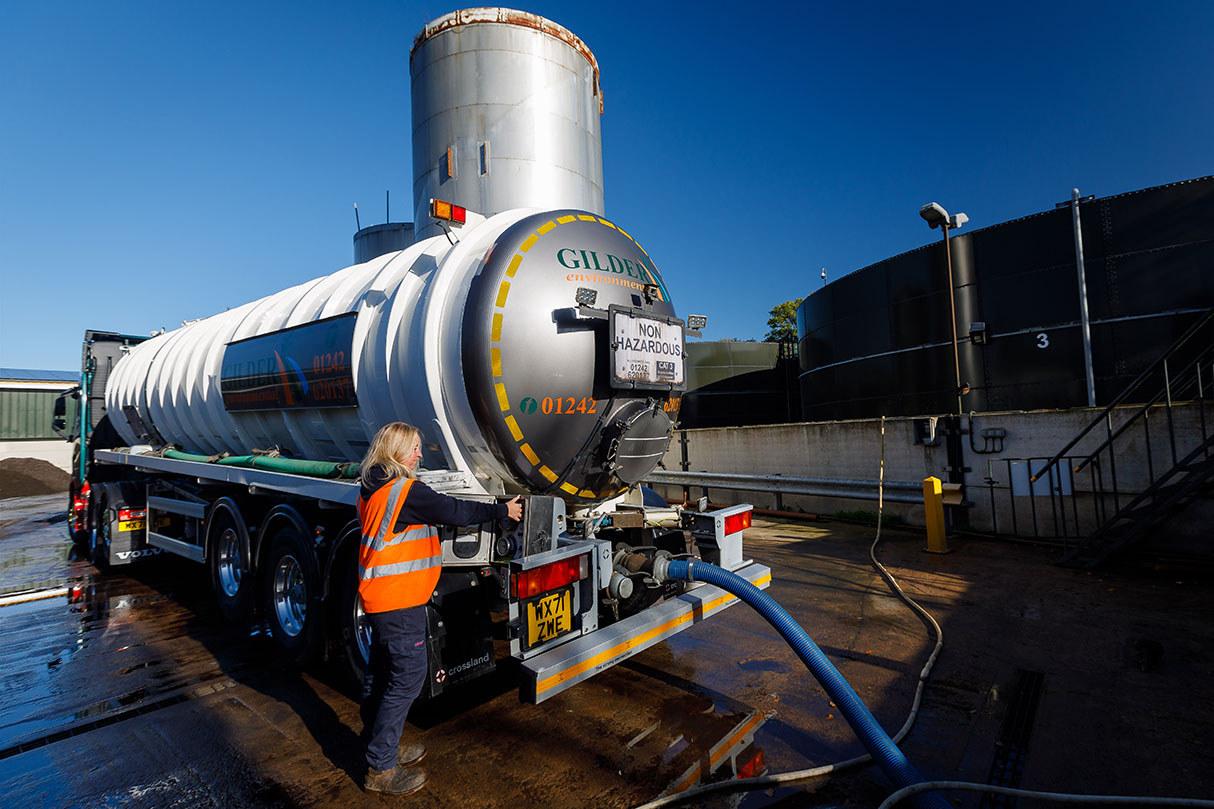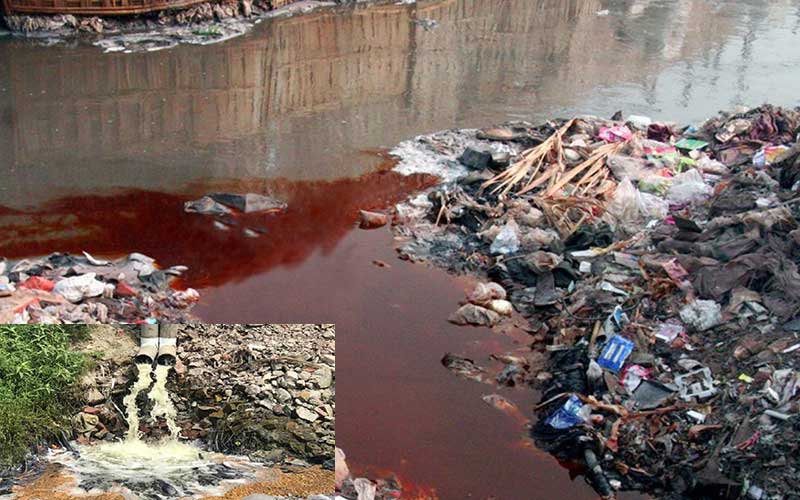Exactly How Liquid Garbage Disposal Works: A Detailed Introduction of Techniques and Technologies Utilized

Overview of Liquid Waste Types
The complexity of liquid waste kinds requires a thorough understanding of their attributes and implications for disposal. Liquid waste can broadly be categorized into several kinds, consisting of industrial, community, farming, and contaminated materials. Each classification displays unique residential or commercial properties, calling for specific management techniques to mitigate environmental and wellness threats.
Industrial liquid waste stems from making processes and usually has a range of contaminants, such as hefty steels, solvents, and natural compounds. Local fluid waste, largely comprising wastewater from families and industrial establishments, includes raw material, nutrients, and microorganisms (industrial wastewater treatment). Agricultural fluid waste, consisting of runoff from farms, might consist of plant foods, pesticides, and pet waste, positioning dangers to water quality and ecological communities
Unsafe fluid waste is defined by its poisoning, sensitivity, or prospective to trigger damage. Comprehending these diverse liquid waste types is critical for developing efficient disposal methods and making certain conformity with ecological guidelines.
Physical Treatment Techniques

Testing is the preliminary action, where larger particles and particles are removed from the fluid waste using screens or grates. This procedure shields downstream tools from damages and ensures smoother procedure. Complying with screening, sedimentation uses gravitational pressure to separate solids from fluids. In sedimentation tanks, heavier particles resolve at the bottom, forming a sludge layer, while the cleared up liquid can be additional treated.
Filtering is another necessary method that entails passing the liquid through permeable products, such as sand or membranes, to catch smaller sized particles. This action enhances the quality of the liquid, making it suitable for succeeding therapy procedures.

Chemical Treatment Methods
Chemical treatment techniques are important for effectively handling liquid waste, particularly in addressing dissolved and colloidal contaminants that physical methods might not properly get rid of. These methods utilize different chemical agents to counteract, precipitate, or transform hazardous compounds right into less hazardous kinds.
One typical method is coagulation and flocculation, where chemicals such as alum or ferric chloride are included to advertise the gathering of suspended bits. This process enhances sedimentation, enabling easier removal of the resulting sludge. Additionally, oxidation procedures, utilizing representatives like chlorine or ozone, are utilized to damage down complex organic substances and microorganisms, providing the waste much safer for discharge or more therapy.
Neutralization is an additional essential strategy, which changes the pH of acidic or alkaline waste streams to neutral degrees, protecting against prospective damage to downstream systems and the environment. Additionally, advanced oxidation procedures (AOPs) utilize mixes of oxidants and ultraviolet light to weaken consistent toxins, accomplishing a greater degree of treatment efficiency.
Organic Treatment Procedures
Biological treatment procedures play an important function in the monitoring of liquid waste by making use of bacteria to decay raw material and lower impurity levels. These processes can be broadly categorized into anaerobic and cardio therapies, each employing details microbial neighborhoods to attain reliable waste degradation.
Cardio treatment entails the usage of oxygen to facilitate the malfunction of natural materials by microorganisms. This procedure check my source is generally applied in triggered sludge systems, where aeration containers give a favorable atmosphere for microbial growth, leading to the oxidation of organic contaminants. The resultant biomass can be separated from treated effluent with sedimentation.
In contrast, anaerobic treatment occurs in the absence of oxygen, depending on various germs to damage down raw material. This method is especially advantageous for high-strength waste, as it produces biogas, a renewable resource source, while minimizing sludge production. Technologies such as anaerobic digesters are often employed in industrial and metropolitan applications.
Both anaerobic and cardio organic treatments not only lessen the ecological impact of fluid waste however additionally promote source recovery, making them necessary parts of lasting waste monitoring methods. Their performance, flexibility, and performance sustain their widespread implementation across various sectors.
Arising Technologies in Disposal
Ingenious approaches to liquid waste disposal are quickly evolving, driven by improvements in modern technology and a boosting emphasis on sustainability. Amongst these arising technologies, membrane layer bioreactors (MBRs) have gotten grip for their capability to combine biological therapy with membrane layer filtration, leading to top notch effluent that can be recycled in numerous applications. MBRs enable smaller sized footprints and much more effective procedures contrasted to conventional systems.
An additional encouraging advancement is making use of anaerobic digestion combined with nutrient recovery modern technologies, which not only deals with liquid waste but additionally creates biogas and recoups important nutrients like nitrogen and phosphorus. This twin benefit boosts source efficiency and lowers ecological effect.
In addition, progressed oxidation procedures (AOPs) are being taken on for the destruction of complicated natural pollutants. These techniques utilize powerful oxidants and stimulants to break down pollutants at the molecular degree, using an extremely reliable service for tough waste streams.
Additionally, the combination of expert system and artificial intelligence in waste management systems is enhancing operational effectiveness and anticipating upkeep, bring about lowered prices and enhanced ecological compliance. These modern technologies show a considerable shift towards even more efficient and sustainable fluid waste disposal methods.
Conclusion
To conclude, reliable liquid waste disposal necessitates a comprehensive understanding of different strategies and innovations. browse around here The integration of physical, chemical, and organic treatment techniques makes sure the efficient administration of diverse waste types. Furthermore, the introduction of ingenious technologies boosts therapy effectiveness and promotes sustainability in waste administration practices. By constantly advancing these techniques, it comes to be possible to resolve the growing challenges connected with fluid waste, inevitably adding to environmental security click over here and resource healing.
Fluid waste disposal is an essential facet of ecological monitoring, requiring a thorough understanding of different strategies and modern technologies tailored to various waste kinds. Liquid waste can generally be classified into numerous kinds, consisting of industrial, metropolitan, farming, and harmful waste. Agricultural fluid waste, consisting of drainage from ranches, may contain plant foods, chemicals, and animal waste, presenting threats to water quality and communities.
Numerous physical treatment approaches play a vital duty in taking care of liquid waste effectively - industrial wastewater treatment.In conclusion, efficient fluid waste disposal necessitates a comprehensive understanding of numerous strategies and technologies